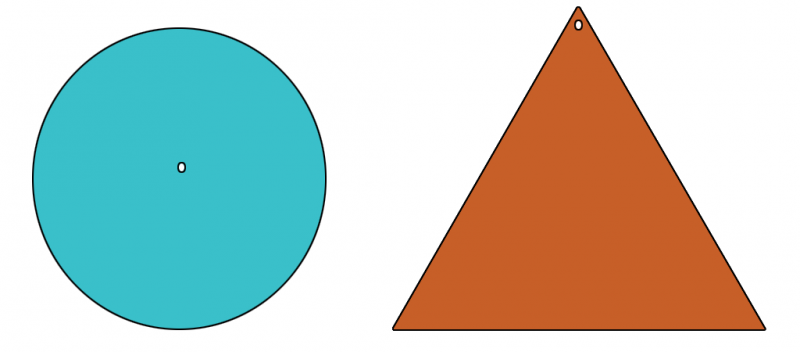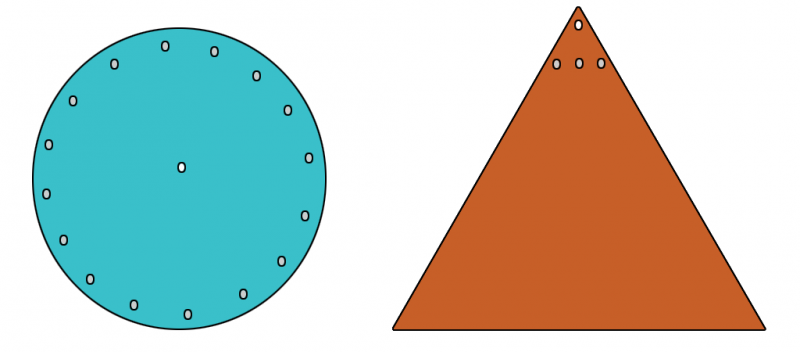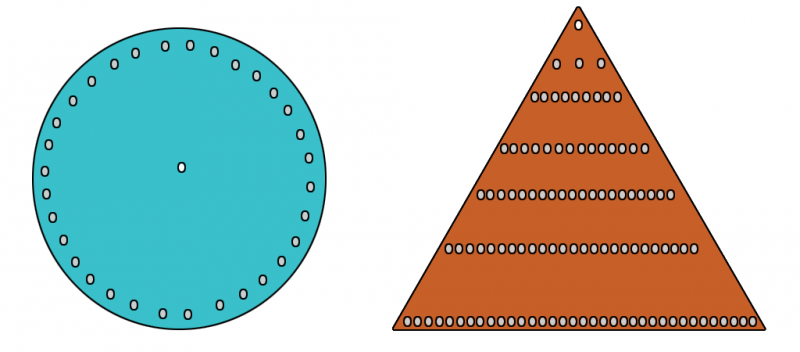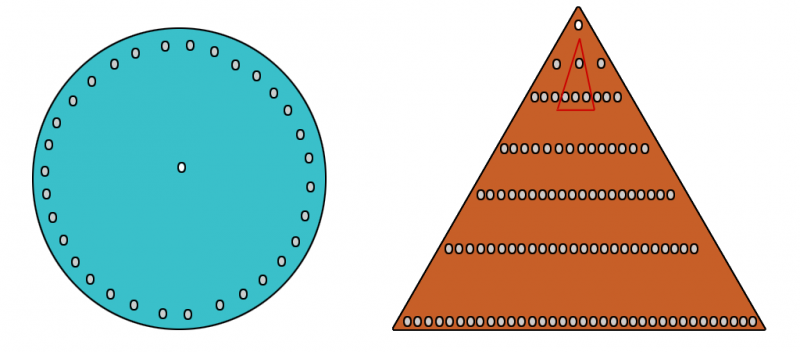Centralization Versus Hierarchy
Some of the best advice received in this life goes as follows: “All of life comes down to being organized.” To a young person, this is perplexing; what does it mean to be organized? It turns out that being organized refers to preparation, state of mind, and eventually, group including at its utmost, civilization itself.
Organization refers to the relationship between parts in a whole. If they reveal a pattern, and this pattern is adapted to a purpose, we say that the whole is highly organized. If no discernible pattern exists, and this impedes the ostensible purpose, we say that the situation is poorly organized.
Imagine for a minute two automobile repair shops. In one, tools are in a heap in the back, so that to find one requires digging around for several minutes. In another, tools are arrayed not just in an order by type, but where they are likely to be used in the process of repairing a car.
In the same way, a highly organized civilization has people in place to take over every role. A poorly organized one has no specialization of roles, and so whenever the time comes that it needs someone to get something done, it has to rummage around to find someone to take on that role.
Following this idea, consider two minds. In the first, facts are memorized and associated with a topic so that they can be recalled; in the second, there is an outline which includes all topics, and each topic has an outline, with each fact associated with a data point within that outline. Which is more organized?
Once we decide to be organized, the question of what type of organization — and thus, what degree of being organized and for what purpose — arises. We humans have two basic options, centralization and hierarchy for our choice of organized society (as opposed to disorganized, like anarchy).
In this chart, you can see that centralization operates by having a “center” to which all others refer. If every person in a society must go through a single bureau to get something done, even if there are many bureaus for each different topic area, it is centralized.
Centralization also applies to the truly primitive structure of the dictator or micromanager. In this case, all decisions are made by one person or by one organization, with all other institutions having to follow their lead or be excluded from the power structure. Centralization requires absolute obedience.
Hierarchy presents a more complex organization, which means that it has more overhead than disorganization or centralization. At the very top, there is a head. Below this person are tiers of subordinates, with each managing subordinates below them.
Now look what happens as these systems grow: the hierarchy becomes more complex by adding layers which answer to the original leader through other layers, but the centralized version simply adds more people around the center. Centralization means that everyone answers to the same control authority, and in that they are “equal.”
The problem with centralization arises when central control has to address specific local circumstances or details. It is far removed from the location in question and the specialization involved, so responds with general ideological theory instead of specific adaptations. Inflexible, it begins to fail.
Hierarchy involves a higher cost to every transaction because it must filter through any number of levels. A local problem is escalated to an enclosing series of regions and finally makes it to the top; this presents a problem when a local problem is in fact a symptom of a systemic problem and the local authorities do not recognize it.
Given enough time, however, badly managed locales manage to “fail gracefully” under hierarchy because their mismanagement affects them and not everyone else. The same bad manager in a centralized system damages everyone in the entire organization. In a hierarchy, the damage is limited to his immediate area.
Under hierarchy, everyone has a local contact for local problems, and specialization is allowed at the level of detail and locality. This requires more layers in between, which means this organization moves slowly, which means that it will tend to be averse to any change which is not proven to succeed.
On the other hand, hierarchy permits testing of some change at the local level. Much as a bad manager can destroy a locality, a bad policy change can do the same, so a hierarchy will allow one locality to try a new idea for a long enough time period to observe its results, consequences, and side effects before broadly adopting it.
Centralized societies on the other hand can change quickly but any change that turns out to be deleterious impacts everyone equally. This means that none escape the bad decision by virtue of their own choice, sometimes called “independence,” or that of their locality.
Hierarchy reveals itself to have a more complex structure. The pyramid form which depicts its organizational chart also occurs in smaller iterations, showing the power of localization as a means of both quarantining bad ideas and enforcing strong power directly to specific problems.
Centralization works with an ideology, but hierarchy does not, because it fundamentally has no ideology other than what works and a general resistance to unproven change, which requires it to be both realistic and have some sense of purpose and transcendental vision about what is good, excellent, and desirable.
With centralization, there can be one single idea that unites all of its ideals, much as there is one single command center uniting all of its people. The system relies on the notion of everyone connected to one point from which they receive commands.
Hierarchy cannot compete with that. It requires nuance, depth, and awareness of scope of time to appreciate, which makes it more appropriate for higher-IQ organizations. However, it moves more slowly than a system where any step applies to all equally. That is more satisfying, in some ways, as it seems stronger.
However, centralization also requires genericization, or the removal of specifics so that any edict applies to all regardless of local or personal circumstances. It is thus less flexible, especially to things like differences between human beings in ability, or market realities.
Centralization thus lends itself to control, or the tendency of the human individual to regulate reality around them by limiting the methods that are acceptable. Control is a form of passive-aggressive bullying, in which the central authority offers its version of truth and expects others to accept it, ostracizing them if they do not.
In this way, centralization and ideology both say to people, “Accept me as reality, or you are my enemy.” This is a devastatingly effective strategy that works until the system has been tested, and when it fails, people tend to turn on it with a vengeance, feeling that they have been manipulated and conned.
Control occupies most of our time in an egalitarian society because since we are all accepted at an equal level, the only way to have anything other than the mediocre is to distinguish oneself, and the only way to do that is to manipulate groups of other people into affirming your importance through votes, purchases, and social behavior.
Whichever model we choose then influences every layer of the organization. A centralized organization will be based upon obedience to the methods used by the central authority, since use of approved methods limits thoughts to approved notions. A hierarchy will cause a heterodox, nuanced, and heuristic approach.
These models influence every aspect of our daily lives. Wikipedia, Google, and social media represent a centralized model for the internet, where every topic people seek can be found in a handful of sites which use similar standards and rules because they are co-dependent.
The old internet was hierarchical, with subject matter experts in every area becoming unofficial authorities, creating layers of commentary and supplements below them. The old internet lacked an ideology, but had a number of informal conventions — FAQs, hat tips, and crossposting — which maintained its order.
Under Wikipedia et al., one single “truth” rules everything else, and people defer to this centralized authority instead of producing their own branches. This standardizes the internet, making it conform to a single standard, and introduces fear of being out of sync with the central controller.
People ask why many older internet users have such a bigotry against Wikipedia, Google, and social media, and the answer can be found in how those centralized a medium which was effective because it was not centralized. With centralization came standardization, and this provided a negative incentive to produce truthful content.
Wikipedia, because it is the source that every member of the herd has been trained to link, discourages others from investing the time in developing their own competing information because it will only be seen by a few. At the same time, Wikipedia standardizes on utilitarian definitions, or what most people wish were true.
In our contemporary society, bureaucracies represent a notion of centralized control. While there are many, all defer to federal authority and are standardized to the levels it sets. Every person must go to the same bureaucracy, be treated the same, and get its approval in order to conduct normal life activities. Centralization applies.
Because of the centralized nature of our society, we are living forever in the Reign of Terror: looking for those who are not conforming or are non-compliant. We seek those who are threats to the uniformity of obedience, rather than those who are actual threats, because in centralization, the “system” replaces the organization.
In a Reign of Terror, much as in a Communist nation, people are rewarded for smashing down ideological threats and no extreme can be too much. The guillotines, killing fields, Red Guards, fake mental asylums, and gulags are sure to follow.
In our modern neo-Communist system, government benefits from chaos so encourages freedom of speech and other minor concessions in order to increase the confusion as to what is actually true. It then uses its central authority to determine who is rewarded, and so people conform in order to avoid getting cut out of the wealth train.
For that reason, government needs to do very little ideological enforcement which could make it look bad; instead, it simply unleashes the crowd with the promise that whoever destroys an ideological enemy will be rewarded. The first to shout “racist” gets social approval, and with that name recognition, and with that, becomes relevant to the central authorities who always want to integrate more thoroughly with what is popular.
Like centralization, control is a method that becomes its own goal. When compliance is more important than purpose or consequences in reality, you have a method-based system that employs control in place of leadership or purpose.
While hierarchy seems like the opposite of this, it is in fact simply an alternative; the real antithesis to centralization is having a purpose for the organization so that control-based structures do not arise, since those always conceal the selfish motivations of individualists within the organization.
To have such a purpose, we need what people mean when they say “harmony,” which is unity across all institutions as to our positive, forward, and affirmative goal. This habit, an eternalist or traditional type of civilization, is inverted under the modern lens so that disharmony becomes the norm so that the central power is more absolute.
With purpose, one can see the value in hierarchy despite its higher operating costs. It might even be argued to be the most important function of an organization, since it holds the group together and keeps it on task, and without it, groups dissolve first into centralization and next into anarchy.
Tags: anarchy, centralization, control, dark organization, eternalism, google, hierarchicalism, hierarchy, wikipedia














